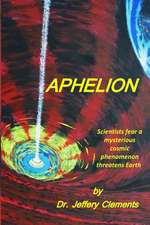New Doppler Effect
Autor Florian Ion Tiberiu Petrescu, Dr Florian Ion T. Petrescuen Limba Engleză Paperback
Preț: 40.25 lei
Nou
Puncte Express: 60
Preț estimativ în valută:
7.70€ • 7.99$ • 6.44£
7.70€ • 7.99$ • 6.44£
Carte disponibilă
Livrare economică 24 februarie-10 martie
Preluare comenzi: 021 569.72.76
Specificații
ISBN-13: 9781469948829
ISBN-10: 1469948826
Pagini: 74
Dimensiuni: 140 x 216 x 5 mm
Greutate: 0.1 kg
Editura: CREATESPACE
ISBN-10: 1469948826
Pagini: 74
Dimensiuni: 140 x 216 x 5 mm
Greutate: 0.1 kg
Editura: CREATESPACE




















